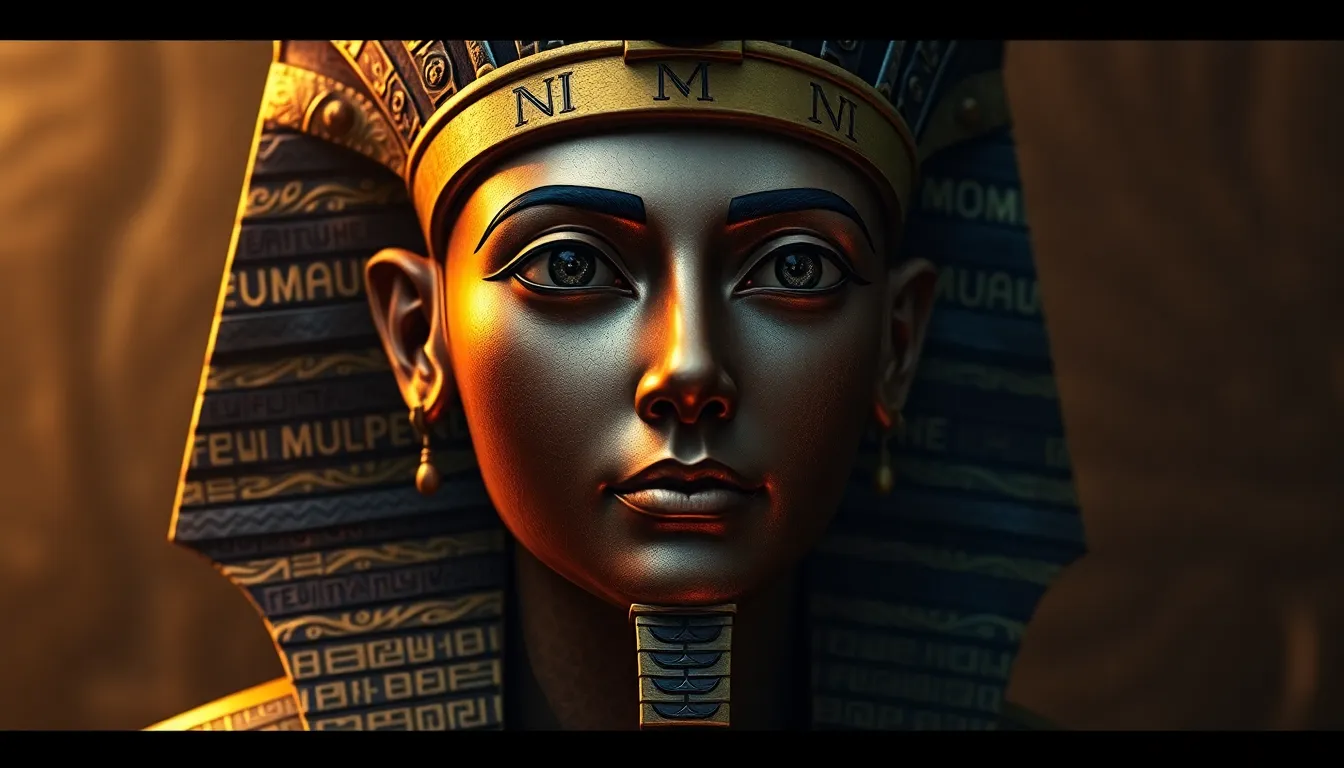The Myths of Pharaoh Neferneferuaten: The Forgotten Queen
I. Introduction
Neferneferuaten, often overshadowed by her male counterparts, holds a significant place in the annals of Ancient Egyptian history. As a female pharaoh of the 18th Dynasty, her reign challenges traditional narratives about gender and power in a society dominated by men. This article aims to debunk the myths surrounding her rule, offering a nuanced understanding of her contributions and legacy.
By exploring the historical context, gender dynamics, and the role of archaeology, we will shed light on the often-overlooked narrative of Neferneferuaten. Our goal is to recognize her influence and ensure that her story is not lost to time.
II. The Historical Context of Neferneferuaten
The 18th Dynasty of Ancient Egypt, a period marked by prosperity and cultural flourishing, serves as the backdrop for Neferneferuaten’s reign. This era saw remarkable advancements in art, architecture, and international relations.
- Political landscape: The reign of Neferneferuaten coincided with a time of stability, following the tumultuous reigns of previous pharaohs.
- Key events: Her ascension is believed to have occurred after the death of her predecessor, which set the stage for her unique position as a female ruler.
III. The Myth of Gender and Power
Misconceptions about female pharaohs often paint them as anomalies in a male-dominated society. However, Neferneferuaten’s reign highlights the complexity of gender dynamics in Ancient Egypt.
She wielded authority comparable to her male counterparts, demonstrating that women could effectively govern. The following points illustrate her role:
- Neferneferuaten held the title of pharaoh, a position typically reserved for men.
- Her ability to command armies and oversee monumental projects challenged the notion that women were inherently less capable leaders.
IV. The Identity Debate: Who Was Neferneferuaten?
The identity of Neferneferuaten has long been a subject of debate among historians. Some theories suggest a possible connection to Hatshepsut, another prominent female pharaoh.
- Lineage: Investigating her familial ties may provide insight into her legitimacy and claim to the throne.
- Legacy impact: The perception of her identity has influenced how she has been recorded in history, often relegating her to obscurity.
V. The Myth of Her Divine Status
Neferneferuaten’s portrayal as a divine ruler is another element that has contributed to her mystique. In Ancient Egypt, the concept of divine kingship was paramount, and she was often depicted in a god-like manner.
Religious practices during her reign emphasized her connection to the divine:
- She was often associated with major deities, reinforcing her status as a ruler.
- Temples and monuments constructed during her reign reflected her divine connections and the cultural importance of religion in governance.
VI. The Legacy of Neferneferuaten
Despite her historical significance, the legacy of Neferneferuaten has been largely forgotten over time. Nevertheless, her contributions to art, architecture, and culture are noteworthy.
- Neferneferuaten commissioned significant building projects that showcased the artistry of her era.
- Her reign contributed to the culture of Ancient Egypt, influencing future generations and rulers.
Modern interpretations have begun to uncover her influence, prompting a reevaluation of her role in history. Scholars are increasingly recognizing her as a pivotal figure rather than a mere footnote.
VII. The Role of Archaeology in Uncovering Truths
Archaeological discoveries play a crucial role in reshaping our understanding of Neferneferuaten. Recent findings have provided valuable insights into her reign and its significance.
- Key discoveries: Artifacts, inscriptions, and monuments related to Neferneferuaten have been uncovered, revealing details about her life and rule.
- Importance of artifacts: These findings help to corroborate historical accounts and challenge previous misconceptions.
Ongoing research continues to unearth new information, offering a more comprehensive view of her historical narrative and contributions.
VIII. Conclusion
In summary, the myths surrounding Neferneferuaten highlight the complexities of gender, power, and identity in Ancient Egypt. By examining her reign through a historical lens, we can appreciate her contributions to art, architecture, and governance.
Recognizing Neferneferuaten’s impact on history is essential, as it prompts us to explore and appreciate the stories of forgotten figures. As we continue to uncover truths through archaeological research, we invite further exploration into the lives of those who shaped our world.




